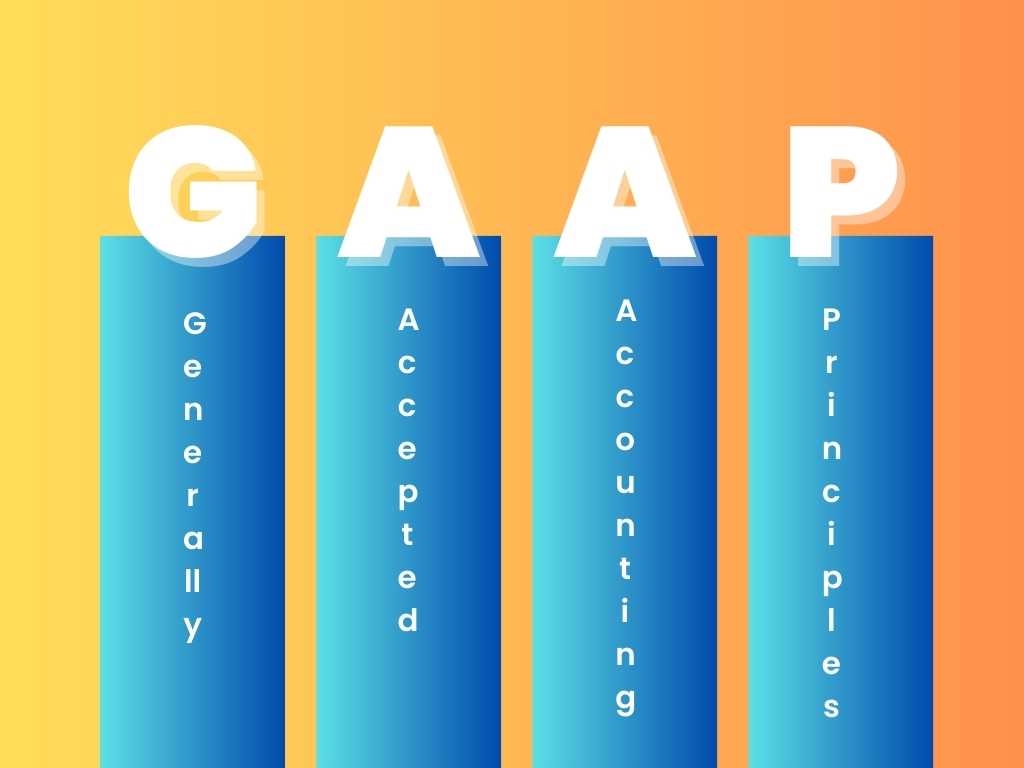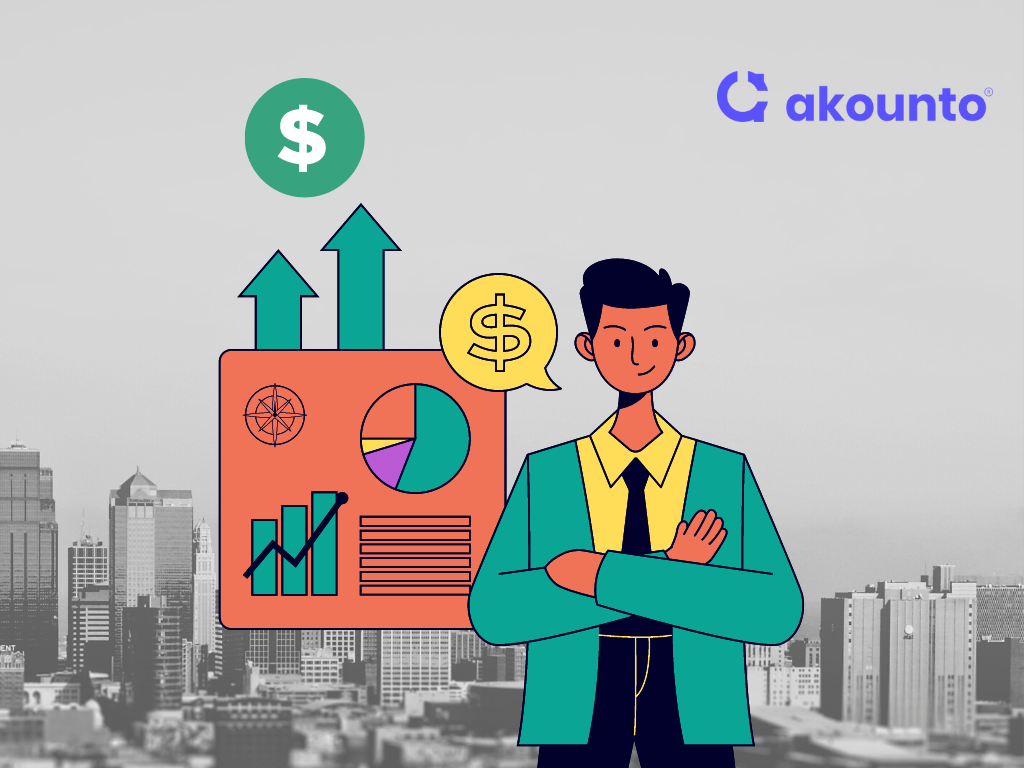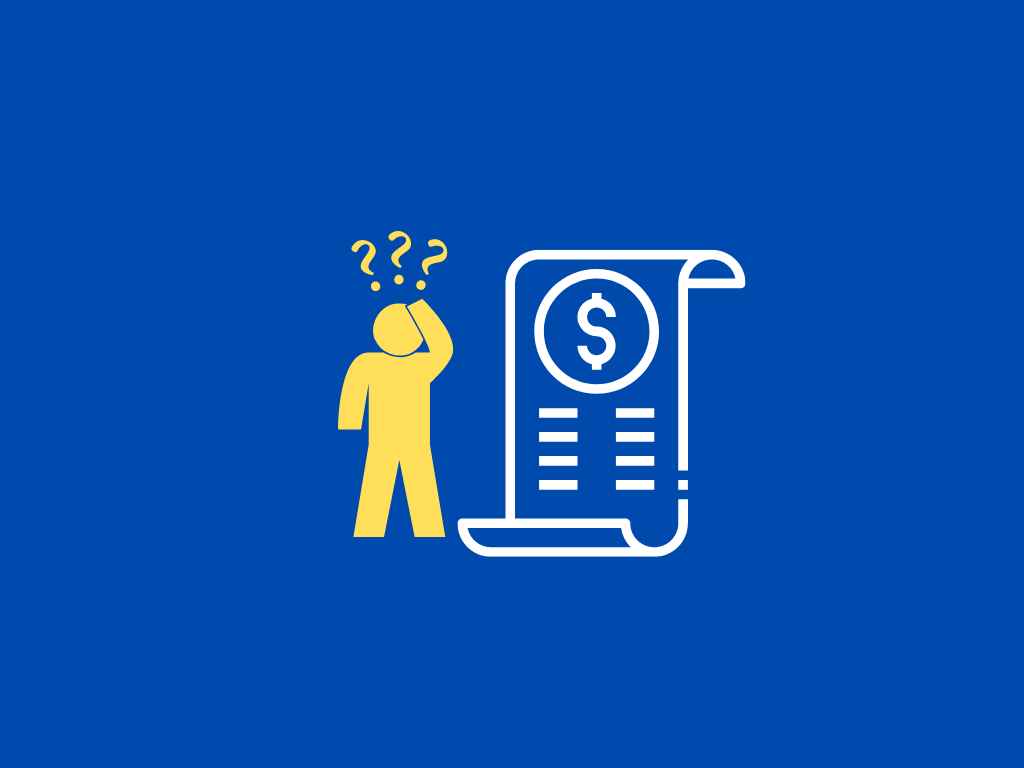What are fixed and variable costs?
Fixed cost is independent of production volume and remains stable, while variable cost is directly proportional to the production volume and thus varies.
Variables cost vary depending on the output, while the fixed cost remains the same irrespective of the volume of production.
Fixed and variable costs, taken together, are the total costs to keep your businesses running and making sales.
In a hurry! Jump to this section to quickly read the difference between fixed and variable costs.
What’s covered in the article
The period in which fixed expenses are incurred in a business is known as fixed costs. In contrast, variable costs are recorded as expenses in the period they are incurred and allocated to the units of production or sales.
Fixed costs are considered a part of a company’s overhead, while variable costs are considered a part of the cost of goods sold.
Fixed costs in accounting: In-depth analysis
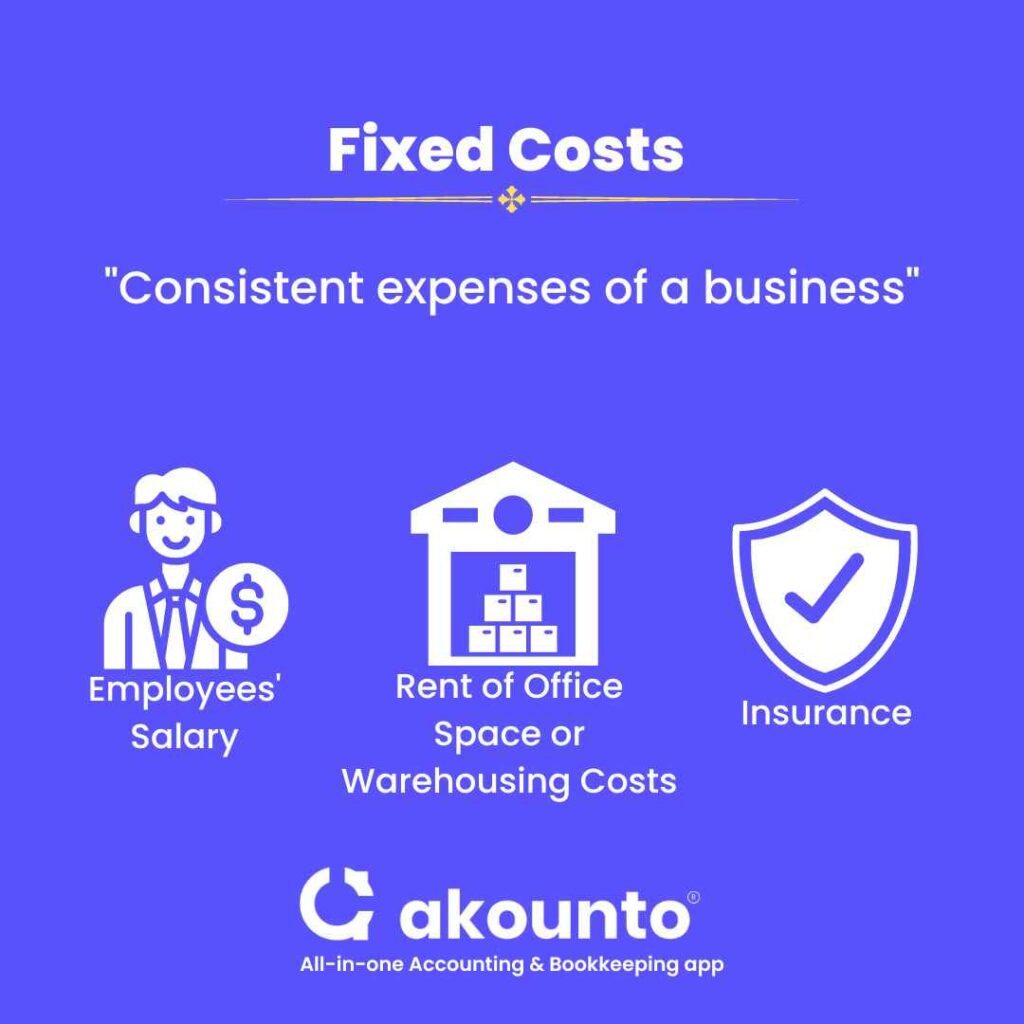
Fixed costs are also known as overhead or indirect costs, as they are not directly tied to the production volume of goods or services. These premium costs are generally constant over a specific period.
Fixed costs appear on your balance sheets and income statements, but the amount is fixed. A business can have several fixed expenses, including costs for things like
- Office rent or property mortgage
- Utility payments.
- Employee payroll
Why fixed costs matter?
Fixed vs variable costs may put fixed costs over variable costs because of their long-term guarantee and predictive benefits. Some advantages are
- Planning and budgeting: Fixed costs are easier to predict and plan for than variable costs to forecast future business expenses accurately.
- Cost control: Fixed cost structure is easier to control than variable costs. For example, a company can negotiate longer-term leases or contracts to secure lower fixed costs.
- Improved profitability: A company can improve its profitability through production output by reducing fixed costs. For example, if a company can negotiate lower rent or lease payments, it will positively impact its volume and output levels.
- Efficiency: Fixed costs can help a business carry out its operational expenses more efficiently by allowing it to make long-term investments in equipment or infrastructure that can lower process costing in the long run.
- Flexibility: Fixed costs can give a business some flexibility in its operations. For example, if a business has high fixed costs but low variable costs, it can ramp up production without incurring additional supplementary costs, which can lead to higher profitability.
Example of fixed costs in accounting
Suppose a small bakery is trying to determine its operating costs. The bakery rents a storefront for $1,500 per month, pays the head baker a salary of $3,000 per month and incurs $500 per month for insurance. The rent, salary, and insurance costs are fixed because they do not vary with changes in the volume of goods produced by the bakery.
Even if the bakery sells no bread, it must still pay its rent, salary, and insurance expenses. On the other hand, if the bakery has a particularly successful month and sells twice as much bread as usual, its fixed costs will not increase.
Fixed costs are an important consideration in accounting because they can significantly impact a business’s profitability. A business can improve its fixed and variable expenses by understanding and managing fixed costs.
Can fixed costs be treated as sunk costs?
In accounting, sunk costs are considered fixed costs that have already been incurred and cannot be recovered, like utility bills, property taxes, and credit card fees.
Sunk costs are not included in the decision-making process in any small business because they cannot be changed and do not affect other financial statements.
Fixed costs do not alter in response to variations in the number of goods or services produced.
A business must pay fixed expenses, like house rent, employee salaries, and insurance fees, irrespective of the production output.
There is a relationship between fixed and sunk costs in that fixed costs can become sunk costs if they have already been incurred and cannot be recovered.
For example, if a business signs a long-term lease for a storefront, the cost of the rent is a fixed cost.
However, if the business decides to close its doors and move out of the storefront before the lease’s end, the remaining rent payments would be considered a sunk cost because they have already been incurred and cannot be recovered.
Variable costs in accounting: In-depth analysis
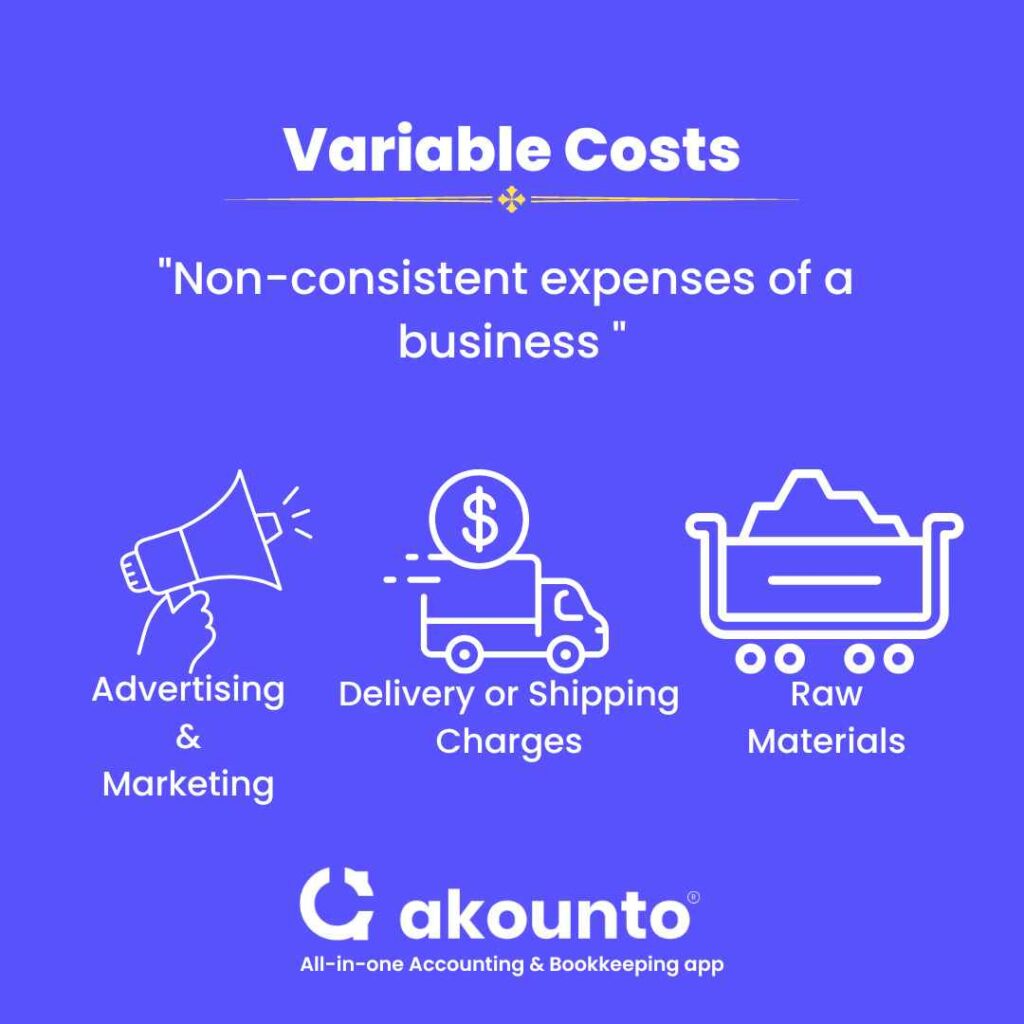
Variable costs are also direct, as they are directly tied to producing goods or services.
As the volume of production rises, the variable costs also increase, and vice versa.
High variable costs are essential to the operation of a business and directly contribute to the company’s revenue.
They fall under the category of Costs of Goods sold.
Why variable costs matter?
Variable costs are activity-based costing that is only incurred when there is actual production or sales activity, which helps to minimize waste and reduce overall costs.
Examples of variable costs
Here is an example of variable costs in accounting:
Suppose a small bakery is trying to determine its operating costs. The variable costs contribute to the following:
- The cost of flour, sugar and other ingredients used to make bread is $0.50 per loaf.
- The cost of packaging materials, such as bags and boxes, is $0.10 per loaf.
- The labor cost to produce each loaf of bread is $0.75 per loaf.
In this example, the cost of ingredients, packaging materials, and labor are all fixed variable costs because they vary with the volume of goods produced.
Apart from the business expenses, if the bakery produces 100 loaves of bread in a given month, its variable costs will be $50 for ingredients, $10 for packaging materials, and $75 for labor, for a total of $135 in variable costs. If the bakery produces 200 loaves of bread in a given month, its variable costs will double to $270.
Variable costs are an important consideration in accounting because they can significantly impact a business’s profitability. A business can improve its bottom line by understanding and managing variable costs.
Fixed Costs Vs Variable Costs: Key Features
| Point of Difference | Fixed Costs | Variable Costs |
| Definition | Fixed costs are expenses that do not vary with changes in production or sales. | Variable costs are expenses that vary with the level of production or sales |
| Duration | Fixed costs are generally recorded as long-term expenses. | Variable costs are recorded as short-term expenses. |
| The output of the business | The fixed costs are incurred even with zero output. | These costs relate to the production output of the business. |
| Impact | Fixed costs tend to have a longer-term impact on the financial performance of a business. | Variable costs tend to have a more immediate impact. |
| Dependability | Fixed costs are time-related. | Variable costs vary with the levels of production or output. |
| Examples | Examples of fixed costs include rent, salaries, insurance premiums, credit card fees, and loan payments. | Examples of variable costs include materials, supplies, and direct labor. |
A Special Mention: Marginal Costs vs Variable Costs
Marginal costing is one of the costing methods employed to focus on the variable costs of production.
Only variable costs fluctuate directly with the production of goods or services when using marginal costing. Costs like the price of raw materials, direct labor, and packaging are examples of variable costs.
The marginal cost in accounting is the cost of producing an additional unit of a good or service. There is a relationship between marginal cost and variable cost in that marginal cost is a sub-set of variable cost.
It is calculated by taking the total change in the cost of producing a good or service and dividing it by the change in the number of units produced.
When a business decreases production, its variable costs will decrease based on the marginal cost of each additional unit produced will be the additional variable cost incurred to produce that unit.
Understanding marginal cost is important for businesses because it helps them make informed decisions about fixed or variable expenses.
A business can determine certain fixed and variable costs in its business activity by analyzing marginal costs.
The main advantage of marginal costing is that it allows a business to analyze the cost and profit of each production unit, which can be useful in decision-making.
For example, a business uses marginal costing to determine the cost and potential profit of producing each new production unit.
Another advantage of marginal costing is that it can help businesses identify total variable expenses to reduce costs and improve profitability.
By focusing on various costing methods, a business can identify cost-saving opportunities and take steps to reduce its predetermined expenses.
Overall, marginal costing can help a business make informed decisions about production and various costs, improving its bottom line.
Final Words
The choice of fixed vs variable cost depends on the industry type and the product under consideration. Cost accounting helps in taking account of all the fixed and variable costs to determine the total cost of production. Both fixed and variable costs serve as criteria for a broader classification of the cost and help in cost control and price discovery.
Read more on the Akounto blog to understand other accounting topics that can help you make more informed decisions about managing your finances.






